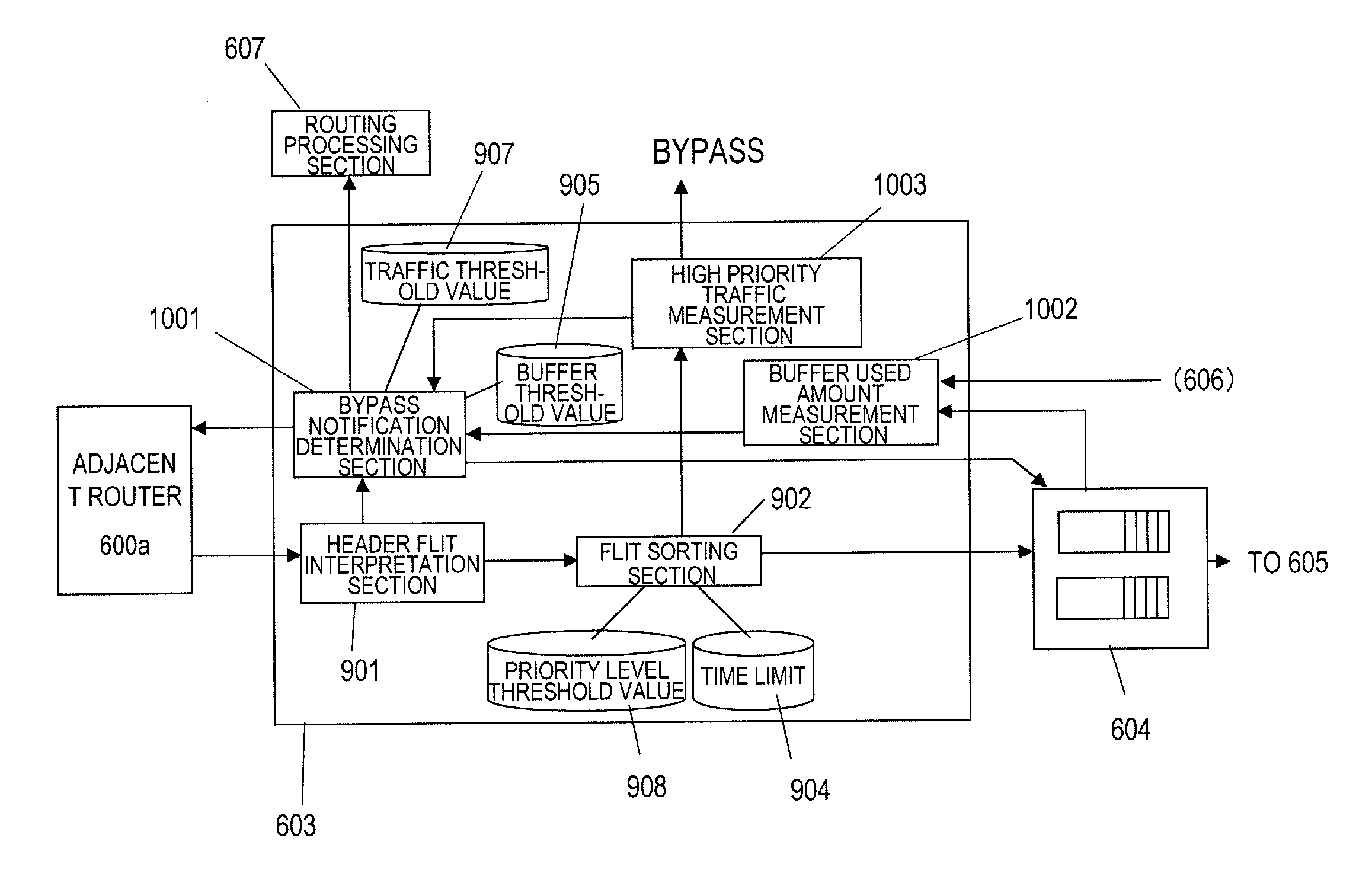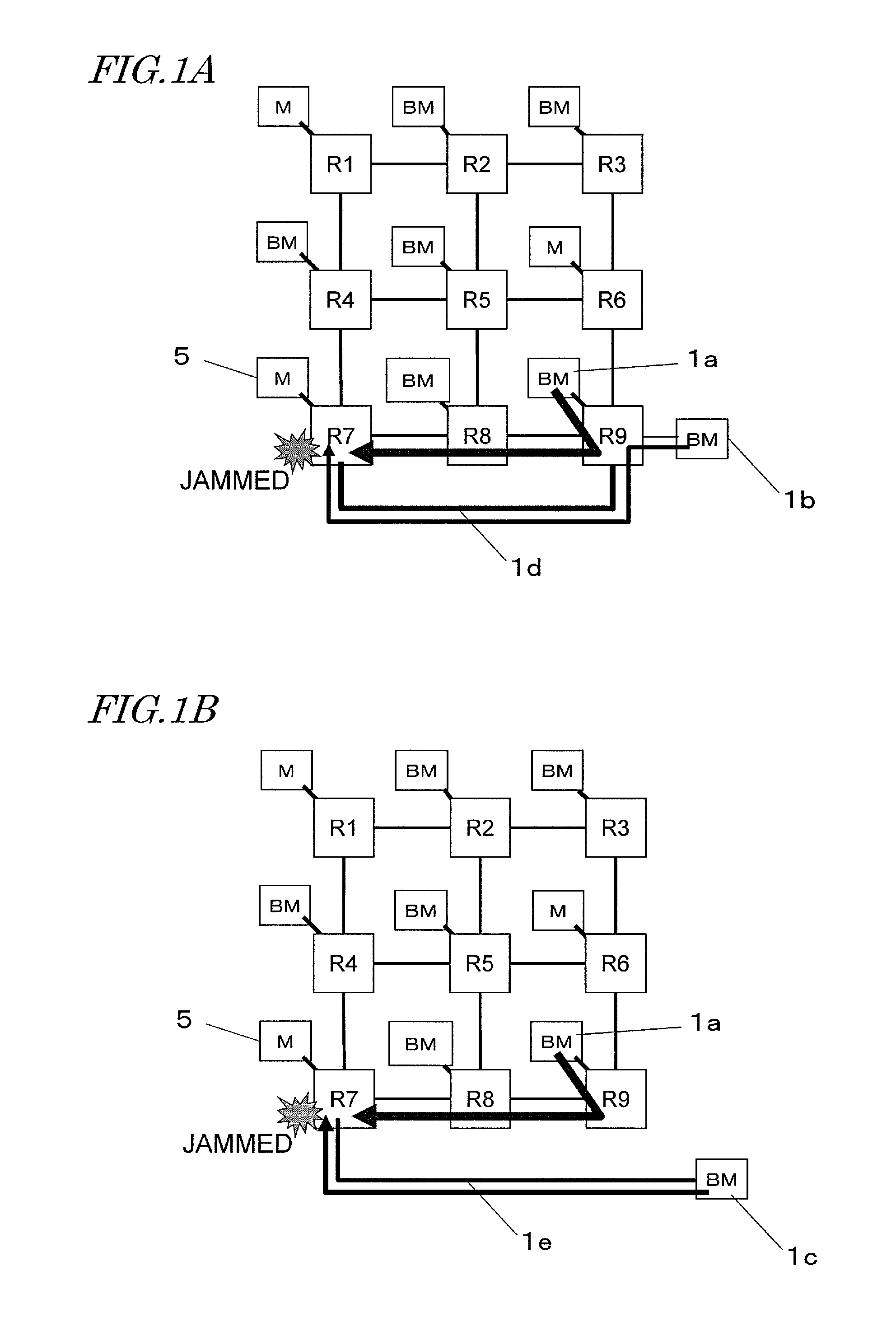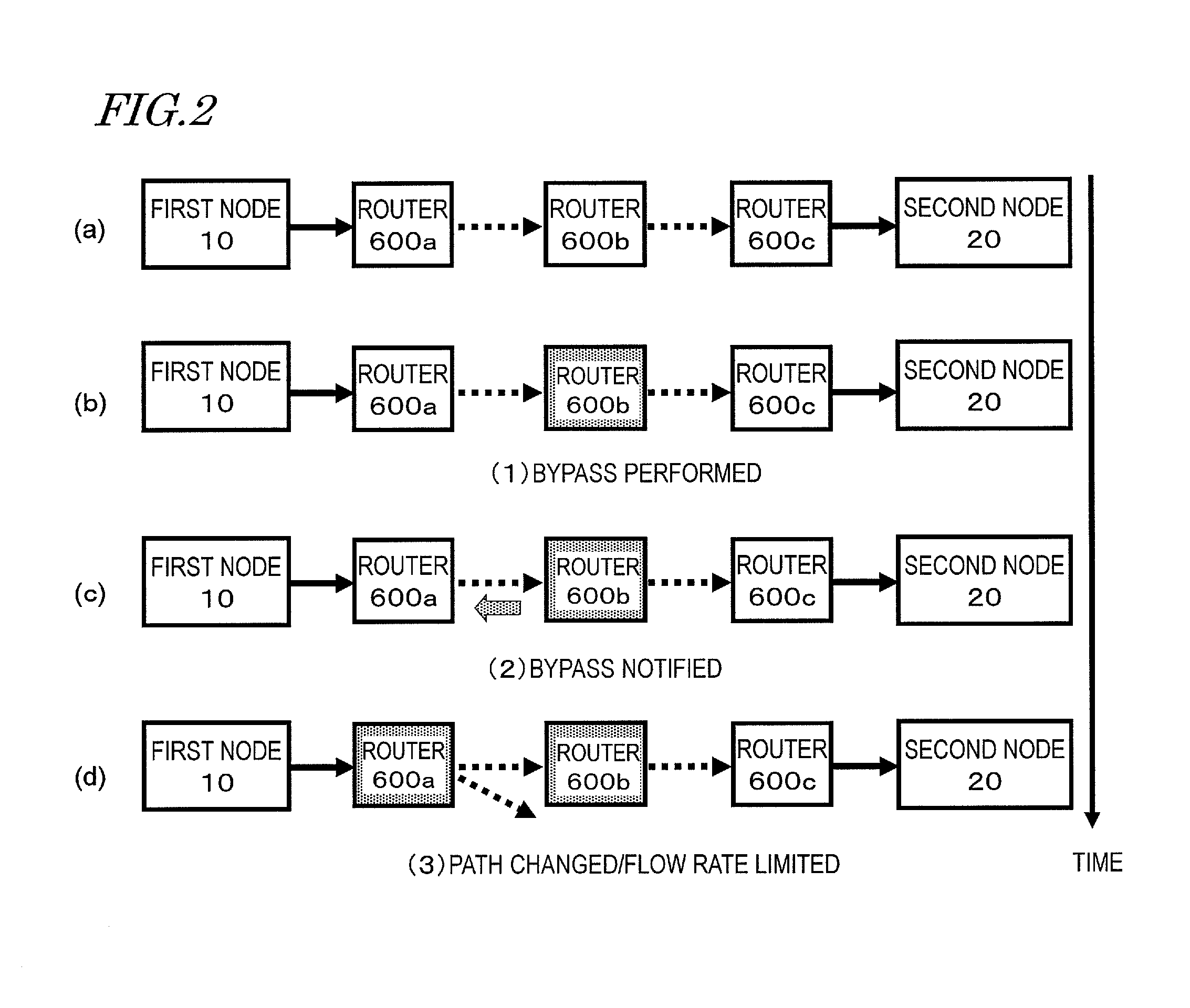Router, method for controlling router, and program
a router and router technology, applied in the field of routers, can solve the problems of increasing the difficulty of designing an integrated circuit by such a centralized bus control, increasing the difficulty of routing traffic through the transmission path, and increasing the scale of the circuit, so as to reduce the delay of data transfer
- Summary
- Abstract
- Description
- Claims
- Application Information
AI Technical Summary
Benefits of technology
Problems solved by technology
Method used
Image
Examples
embodiment 1
1. Overview of this Embodiment
[0121]First, a first embodiment of the present disclosure will be described. This embodiment provides a technology for solving the problem of traffic jam which may occur when a bypass process is executed. First, with reference to FIG. 1A and FIG. 1B, problems caused by the bypass process will be described.
1.1 Problems Caused by Bypass Process
[0122]FIG. 1A shows an example of configuration of a data transfer system for performing transmission and receiving of data between a plurality of bus masters (BM) and a plurality of memories (M) via a plurality of routers R1 through R9. In the example of configuration shown here, the plurality of routers R1 through R9 are connected in a mesh via a bus, and each router is connected to a bus master or a memory. Between the router R9 and the router R7, a bypass path 1d is provided.
[0123]In this example of configuration, from a bus master 1a connected to the router R9, data is transmitted to a memory 5 via the routers ...
embodiment 2
[0276]Now, a router according to a second embodiment of the present disclosure will be described.
[0277]In the first embodiment, the bypass lines are provided in a router or between routers. In this embodiment, the routers are not provided with bypass lines. In the following description, a traffic corresponding to the bypass traffic in the first embodiment will be referred to as a “high priority traffic”, and a traffic corresponding to the non-bypass traffic in the first embodiment will be referred to as a “low priority traffic”. The “high priority traffic” is a traffic required to be transferred with low latency such as, for example, video data or audio data, or a traffic having a high emergency level such as information representing a command issued by the user or notifying system abnormality. The “low priority traffic” is a traffic having a low emergency level such as, for example, data on file transfer or data of an application to be processed in the background. Whether a traffic...
embodiment 3
[0296]Now, a third embodiment according to the present disclosure will be described.
[0297]Before describing this embodiment in detail, the basic principle of this embodiment will be first described.
[0298]FIG. 27 is a block diagram showing a schematic configuration of a router 600 in this embodiment. The router 600 includes an input section 400 for receiving a packet, a bypass control section 200 for determining whether to perform a bypass process of outputting an incoming data transfer unit (packet) with priority or to perform a usual process of not outputting the incoming data transfer unit with priority, and a switch 605 for selecting a transmission path for the packet not to be bypassed from a plurality of paths. In the example shown in FIG. 27, a packet to be bypassed is output through a bypass path 300, and a packet not to be bypassed is output through a non-bypass path 350.
[0299]The bypass path 300 corresponds to, for example, a path passing the bypass line 930 shown in FIG. 5...
PUM
 Login to View More
Login to View More Abstract
Description
Claims
Application Information
 Login to View More
Login to View More - R&D
- Intellectual Property
- Life Sciences
- Materials
- Tech Scout
- Unparalleled Data Quality
- Higher Quality Content
- 60% Fewer Hallucinations
Browse by: Latest US Patents, China's latest patents, Technical Efficacy Thesaurus, Application Domain, Technology Topic, Popular Technical Reports.
© 2025 PatSnap. All rights reserved.Legal|Privacy policy|Modern Slavery Act Transparency Statement|Sitemap|About US| Contact US: help@patsnap.com



